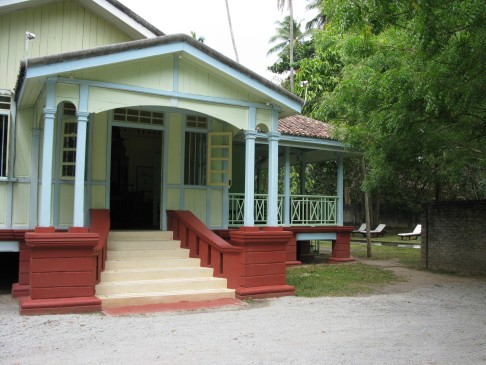History meets luxury at Langkawi's Temple Tree and Bon Ton
Mark Footer

What are they? Sister properties that stand next to each other at the northern end of Langkawi's main tourist strip, Pantai Cenang, and just south of the airport. In 1996, Australian Narelle McMurtrie opened the Bon Ton restaurant here, on an old coconut plantation. Soon after followed a shelter for stray cats and dogs - LASSie (the Langkawi Animal Shelter & Sanctuary Foundation; home to the island's only vet) - and later came guest accommodation in the shape of traditional Malay houses. Dismantled in the villages they were found in (five in Langkawi and three from elsewhere in Kedah), the houses were rebuilt in a kampong, or village, layout to one side of the restaurant, now known as Nam. In 2009, the concept was broadened to include Temple Tree, home to a variety of colonial-era buildings from all over western Malaysia. Each one took about two months to dismantle, and six to put back together. While the exteriors in both the resorts remain true to their origins, the interiors (see Bon Ton, above) have been furnished with an eclectic mix of period furniture sourced from Thailand, Indonesia and elsewhere. Bright carpets lay on unpolished wooden floorboards and everywhere are hillocks of multicoloured cushions. The air-conditioning, rain showers and upmarket toiletries were not enjoyed by the original inhabitants of these buildings, obviously.

Why the name Temple Tree? The only structure on the site before McMurtrie started populating it with buildings was a small Taoist shrine built at the foot of two different species of tree that grow as one (above). Hoping for lucky numbers, local Chinese gamblers gave offerings to the tree - and still do - returning when they won big to hang sashes from the "supernatural" plant's limbs, making for a colourful target to head for by guests powering their way down the swimming pool.

Can you give us some examples of the Temple Tree buildings? There are seven in use at the moment, including the 90-year-old Straits Club House (above), which serves as reception, restaurant, library and bar. The 20 guest rooms are spread through buildings such as Plantation House, which once stood in Penang. One half was built by Malays in 1900 and was added to by a Chinese Hakka family of rubber and durian farmers after they bought it in 1920. The Black & White House (below), which dates from the 1940s and came from south of Kuala Lumpur, is rented as one.

